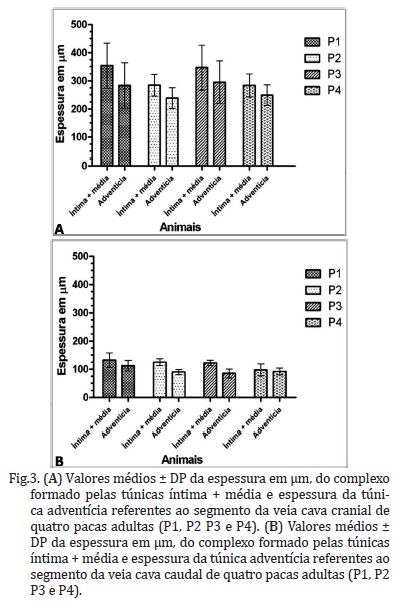The paca (Cuniculus paca) is the second largest rodent of the Brazilian fauna. The excellent meat quality of this specie encourages the development of their commercial production. Moreover, this animal can become a viable alternative for animal experimentation although there exists scarce detailed information concerning their morphology. Therefore the purpose of this study is to describe the morphology, morphometry and ultrastructure in segments of the cranial and caudal portions of vena cava in four adult males and females of Cuniculus paca from the squad of Wild Animals Sector of Animal Science Department of FCAV-Unesp. Parts of the segments were examined by light microscopy and part by scanning electron microscopy. Thickness measures of the tunica intima and media complex and tunica adventitia of the vena cava were taken and analyzed using "T" test (p<0.05). In vena cava the thickness values of the intima, media and adventitia, for all animals, were significantly higher in the cranial segment. The layers of the vessel walls showed variations in structure and thickness, presumably due to an adaptation to functional demand.
Vena cava; histology; hystricomorph; Cuniculus paca; rodents; ultrastructure






